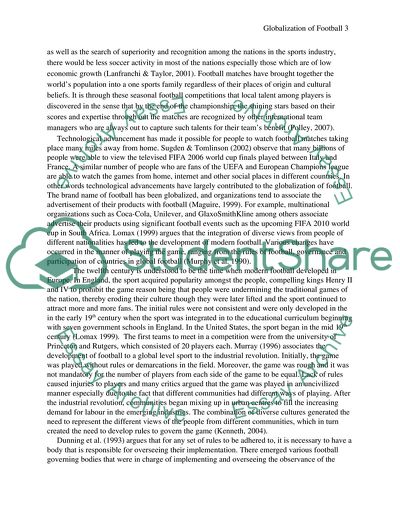Cite this document
(Globalization of Football Research Paper Example | Topics and Well Written Essays - 3750 words, n.d.)
Globalization of Football Research Paper Example | Topics and Well Written Essays - 3750 words. Retrieved from https://studentshare.org/macro-microeconomics/1731977-using-a-series-of-football-related-examples-critically-discuss-how-various-processes-have-led-to-the-globalisation-of-football
Globalization of Football Research Paper Example | Topics and Well Written Essays - 3750 words. Retrieved from https://studentshare.org/macro-microeconomics/1731977-using-a-series-of-football-related-examples-critically-discuss-how-various-processes-have-led-to-the-globalisation-of-football
(Globalization of Football Research Paper Example | Topics and Well Written Essays - 3750 Words)
Globalization of Football Research Paper Example | Topics and Well Written Essays - 3750 Words. https://studentshare.org/macro-microeconomics/1731977-using-a-series-of-football-related-examples-critically-discuss-how-various-processes-have-led-to-the-globalisation-of-football.
Globalization of Football Research Paper Example | Topics and Well Written Essays - 3750 Words. https://studentshare.org/macro-microeconomics/1731977-using-a-series-of-football-related-examples-critically-discuss-how-various-processes-have-led-to-the-globalisation-of-football.
“Globalization of Football Research Paper Example | Topics and Well Written Essays - 3750 Words”, n.d. https://studentshare.org/macro-microeconomics/1731977-using-a-series-of-football-related-examples-critically-discuss-how-various-processes-have-led-to-the-globalisation-of-football.


